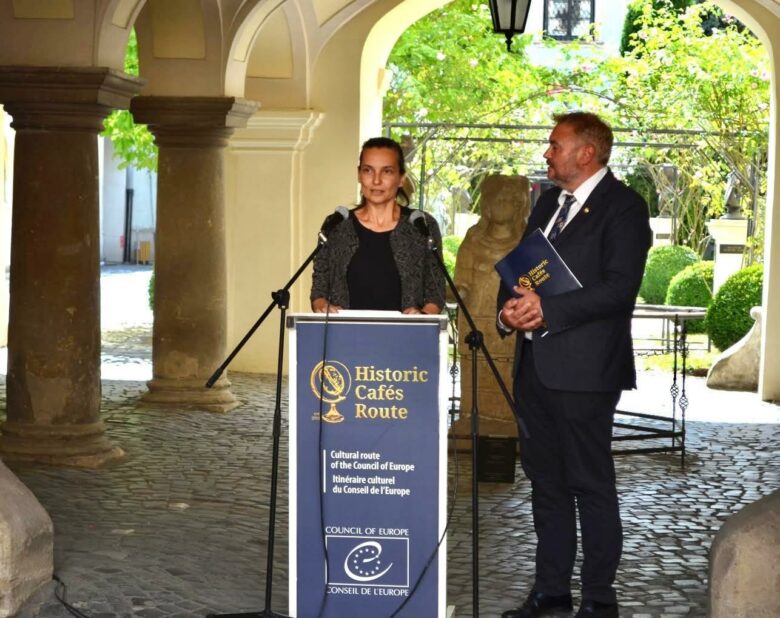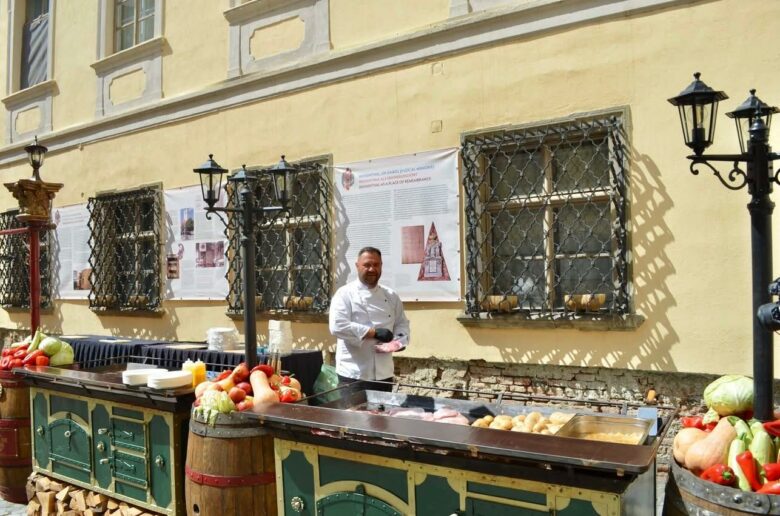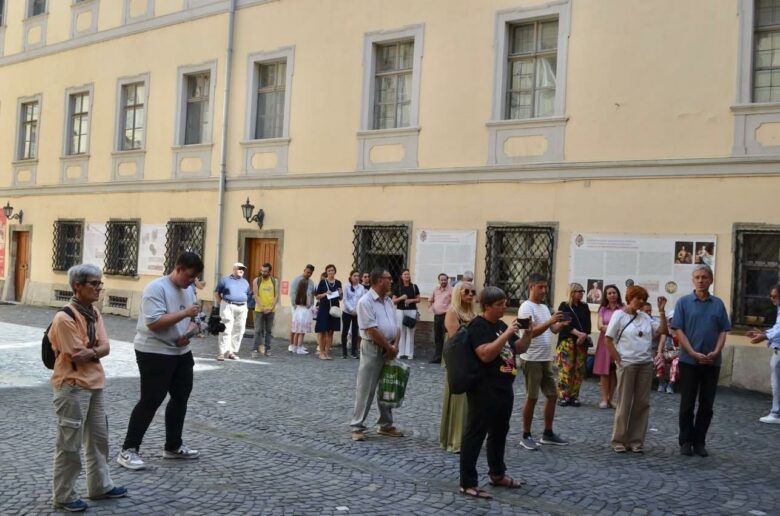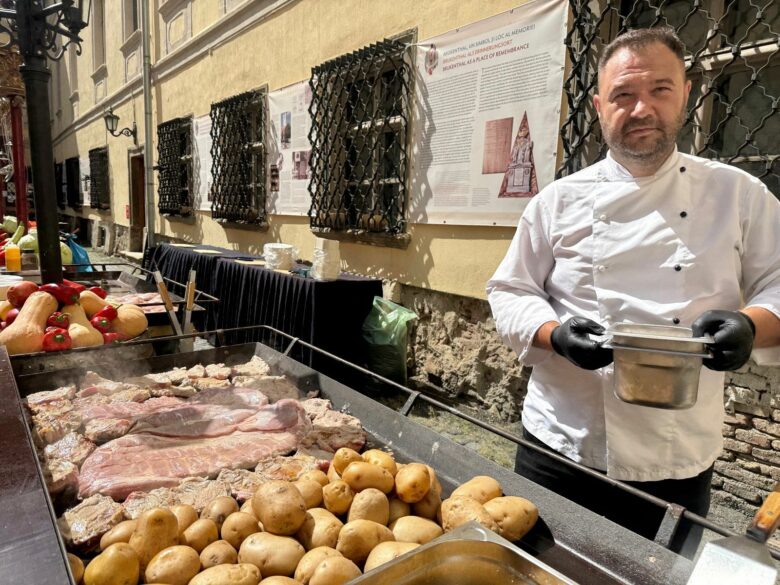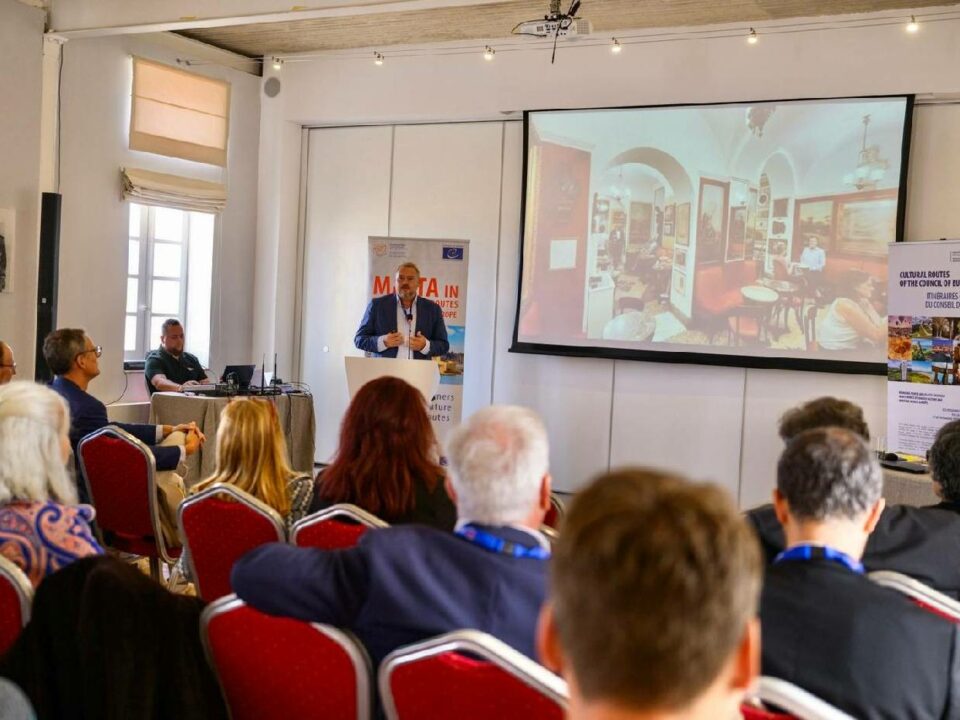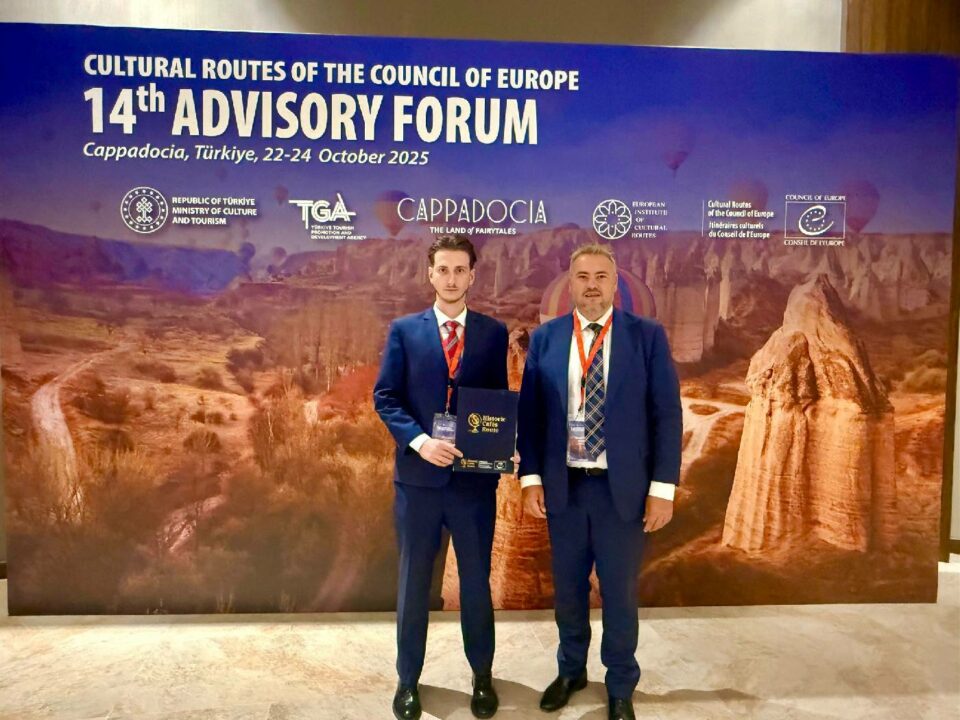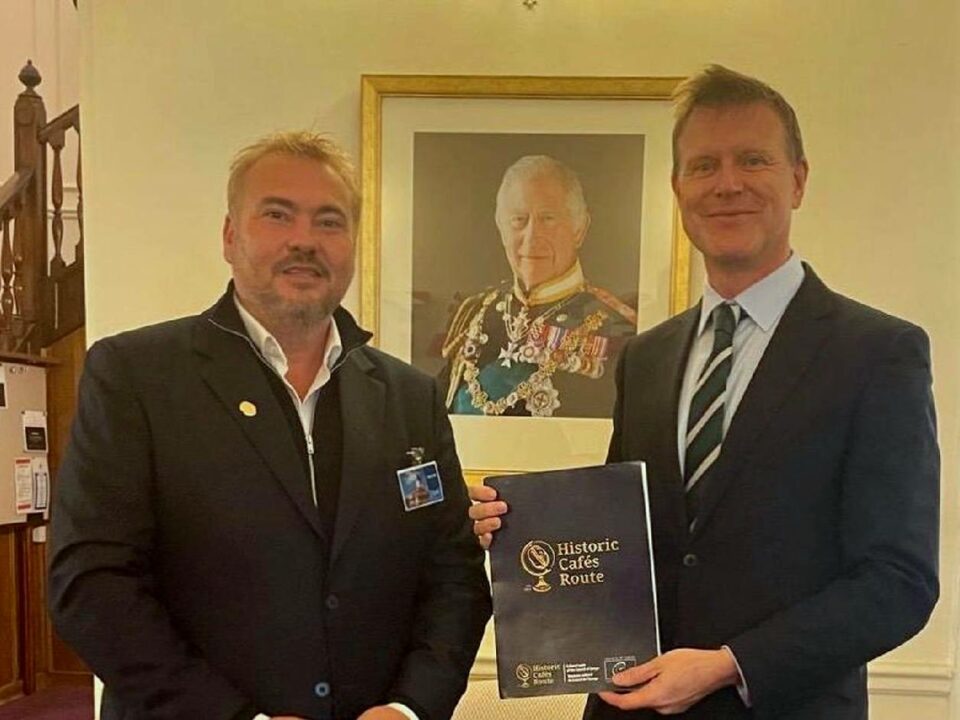The Potato Festival at Brukenthal Palace in Sibiu – An event that brought history, flavor, and culture to the heart of Sibiu
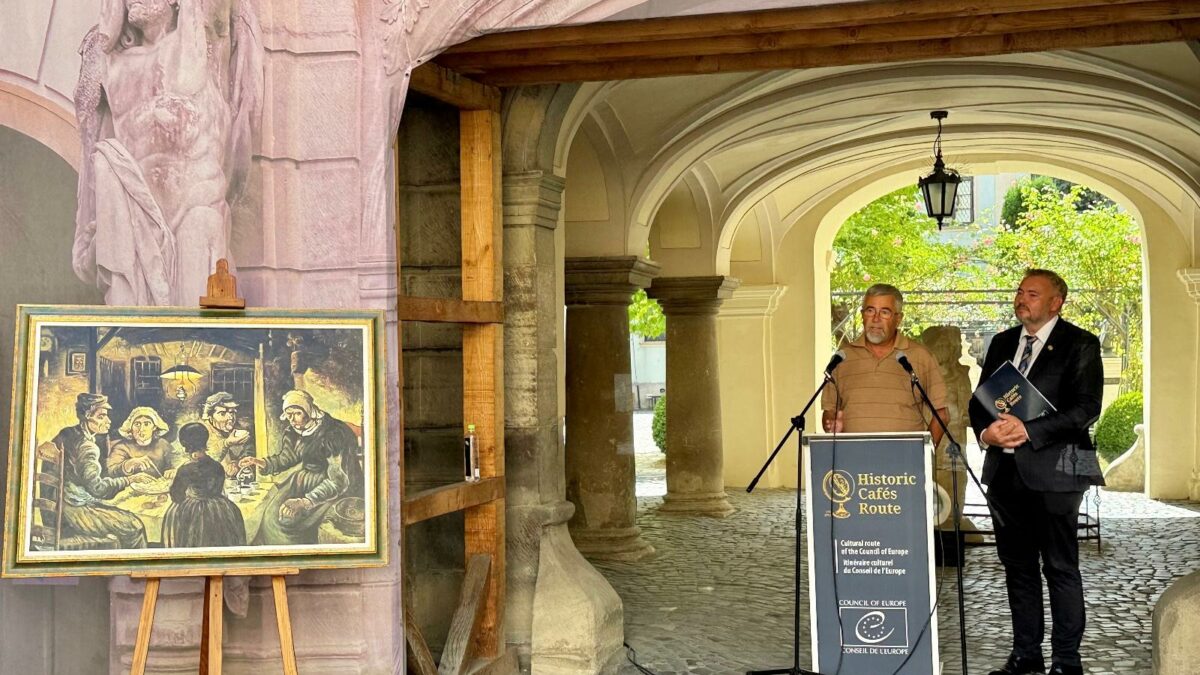
Sibiu, September 1, 2025 – On Saturday, August 30, the courtyard of Brukenthal Palace hosted a unique cultural event: The Potato Festival, an occasion that brought together gastronomy, European heritage, and the visionary spirit of Baron Samuel von Brukenthal in an exceptional Baroque setting.
Organized by the Brukenthal National Museum, in partnership with the European network Historic Cafés Route, the event took place within the framework of the Cultural Routes Program of the Council of Europe and offered the public a captivating journey into the history of the potato – a plant brought from the New World, which over time became an essential root of Transylvanian culinary culture.
The President of the Historic Cafés Route, Arnold Klingeis, offered a moving statement during the official ceremony:
“It is our duty to cultivate and pass on this history. To carry it forward – not only in museums or archives, but also in our gardens, schools, restaurants, and festivals. The potato does not possess the brilliance of the Mediterranean olive or the mystery of Oriental spices – yet it has nourished entire generations and strengthened the bond between people and their land. I invite you to look at this simple potato for what it truly is: a root of Transylvania.”
In the same context, Arnold Klingeis conveyed a message of congratulations to the local administration:
“On behalf of the Council of Europe and the Cultural Routes Program, we send our congratulations and deepest admiration to the administration of the Municipality of Sibiu and the Sibiu County Council for this special recognition. In a competition that brought together thousands of European cities with rich heritage and traditions, Sibiu was designated as a model city for the promotion of cultural and sustainable tourism.”
“This recognition is all the more meaningful in the context of the Council of Europe’s Directive – Sibiu 2019: Cultural Routes FOR Cultural Tourism – which reaffirmed Europe’s commitment to sustainable tourism through the promotion of shared heritage. Sibiu exemplifies this European vision, becoming a living space of intercultural dialogue, innovation in responsible tourism, and the valorization of cultural heritage in a way that inspires all of Europe.”
The Brukenthal National Museum is the oldest museum in Romania and one of the oldest in Central and Eastern Europe, officially inaugurated in 1817. Founded on the collections of Baron Samuel von Brukenthal, Governor of Transylvania in the 18th century, the museum is housed in his former Baroque palace, located in the Great Square of Sibiu.
Today, the museum brings together remarkable collections of European art, Romanian art, rare books, history, and natural sciences, standing as an essential cultural landmark of both Transylvanian and European heritage.
Interim Director Raluca Teodorescu made a statement during the official ceremony, extending an invitation to the leadership of the Cultural Routes Program in Luxembourg to visit the Brukenthal National Museum in Sibiu:
“We are pleased to recall, in this context, that the Brukenthal National Museum has recently been included in the Historic Pharmacies Route of the Council of Europe – an international recognition of our unique heritage and cultural contribution. At the same time, we look with hope to the future and the possibility of becoming part of the Via Habsburg, another prestigious European cultural route, which would bring our museum into an even wider network of values and collaborations.”
“In this spirit, we warmly invite Mr. Rui Gomes, Executive Secretary of the Cultural Routes of the Council of Europe, to visit the Brukenthal National Museum and join us in these endeavors that honor our shared European heritage.”
“We extend heartfelt thanks to the Historic Cafés Route and to all our partners who have joined us in this initiative, strengthening cultural and European bridges that give meaning to our common heritage.”
The atmosphere of the event was enhanced by a tasting of special potato-based recipes, created by Marius Rafa (Pardon Café, member of the Historic Cafés Route), showcasing the culinary versatility of this ingredient and highlighting Transylvanian gastronomic heritage in a contemporary form.
In this context, Marius Rafa, organizer of the culinary presentation at the Brukenthal National Museum, stated:
“The potato is an ingredient with a modest history but an incredible culinary power. Through this festival, we not only celebrate its taste, but also its historical journey – from suspicion to an indispensable presence in every kitchen. We wanted each recipe presented here to tell a story: of the land, of the people, of tradition. To cook on iron stoves, in the courtyard of a Baroque palace, is a return in time, but with a flavor that speaks of both the present and the future. Cooking is, after all, a universal language – and the potato, a dialect that everyone understands.”
The Festival also marked a cultural premiere: the first event in Sibiu held within European cultural routes under the aegis of the Council of Europe, inside a museum, reflecting the city’s commitment to valuing heritage and fostering intercultural dialogue.
Avrig-born painter Mircea Codrea ennobled the event with a gesture of artistic depth: presenting, before the guests and visitors of the Brukenthal Museum, a reinterpretation of the famous painting by Vincent van Gogh – “The Potato Eaters.” This artistic intervention completed the theme of the event, paying visual homage to the humility and symbolic power of the potato in European history – not only as food, but as a marker of cultural identity.
Through this initiative, the Historic Cafés Route and the Brukenthal National Museum reconnect the past with the present, offering the public an experience that blends history with taste and living culture.
The Historic Cafés Route will host at the Brukenthal National Museum in Sibiu an art exhibition dedicated to the history of coffee and historic cafés, inspired by Vincent van Gogh’s iconic painting Café Terrace at Night.
This remarkable exhibition, held in the prestigious Brukenthal National Museum, aims to highlight the cultural, social, and artistic role that cafés have played throughout European history. At the heart of the event lies an artistic reinterpretation of Vincent van Gogh’s celebrated work Café Terrace at Night, a painting that captures the enchanting atmosphere of a nighttime café scene in Arles, France, at the end of the 19th century.



